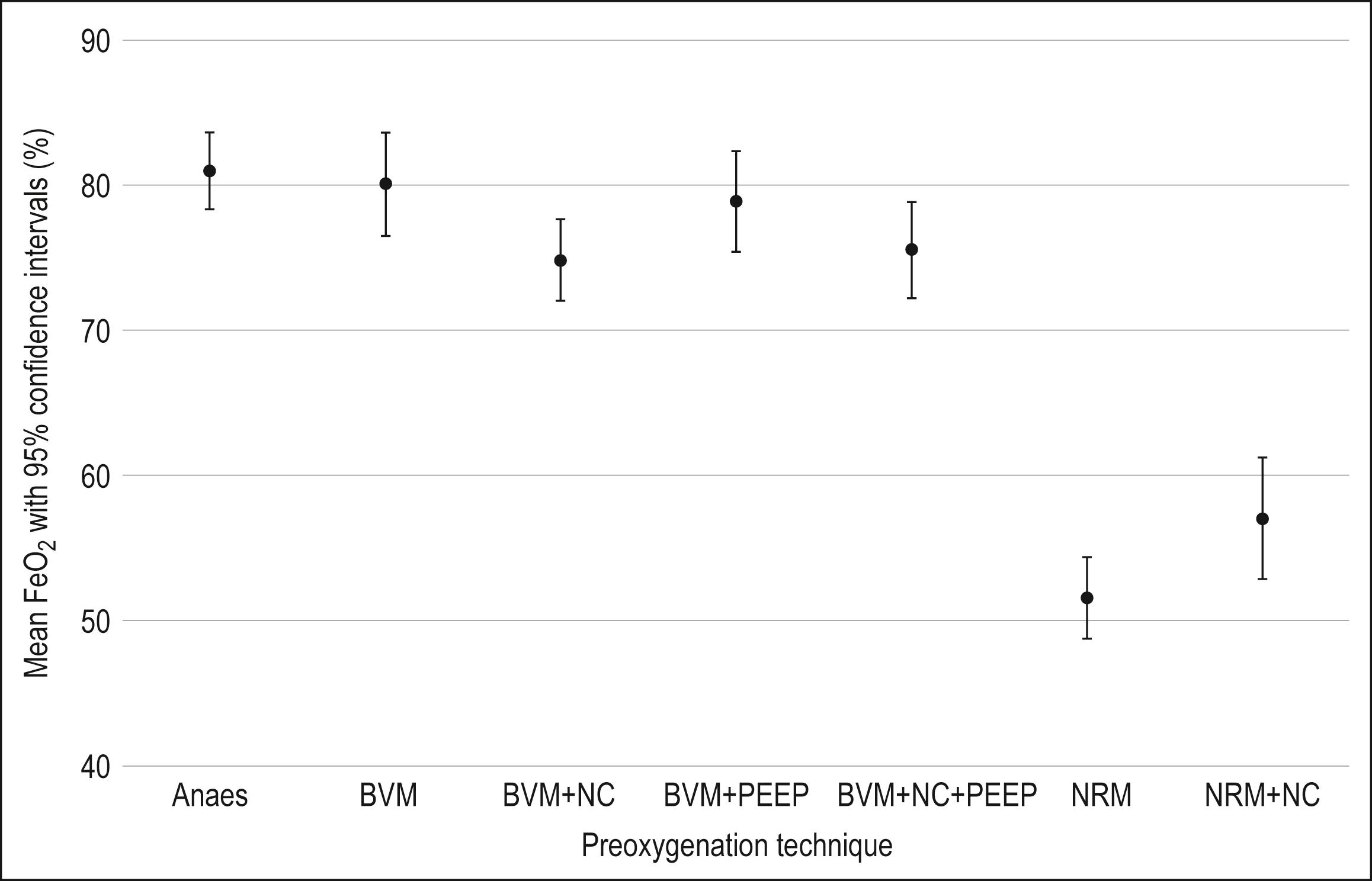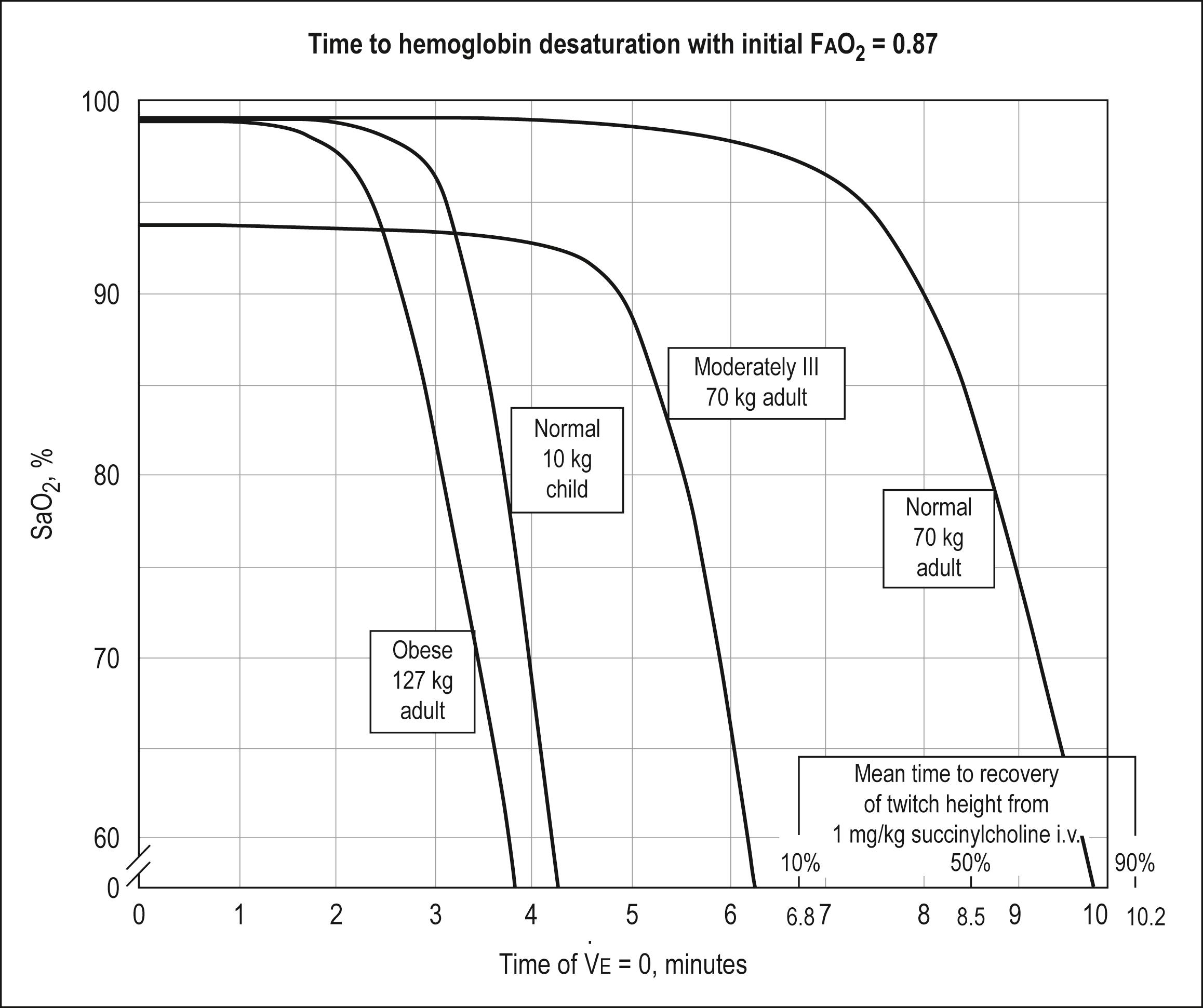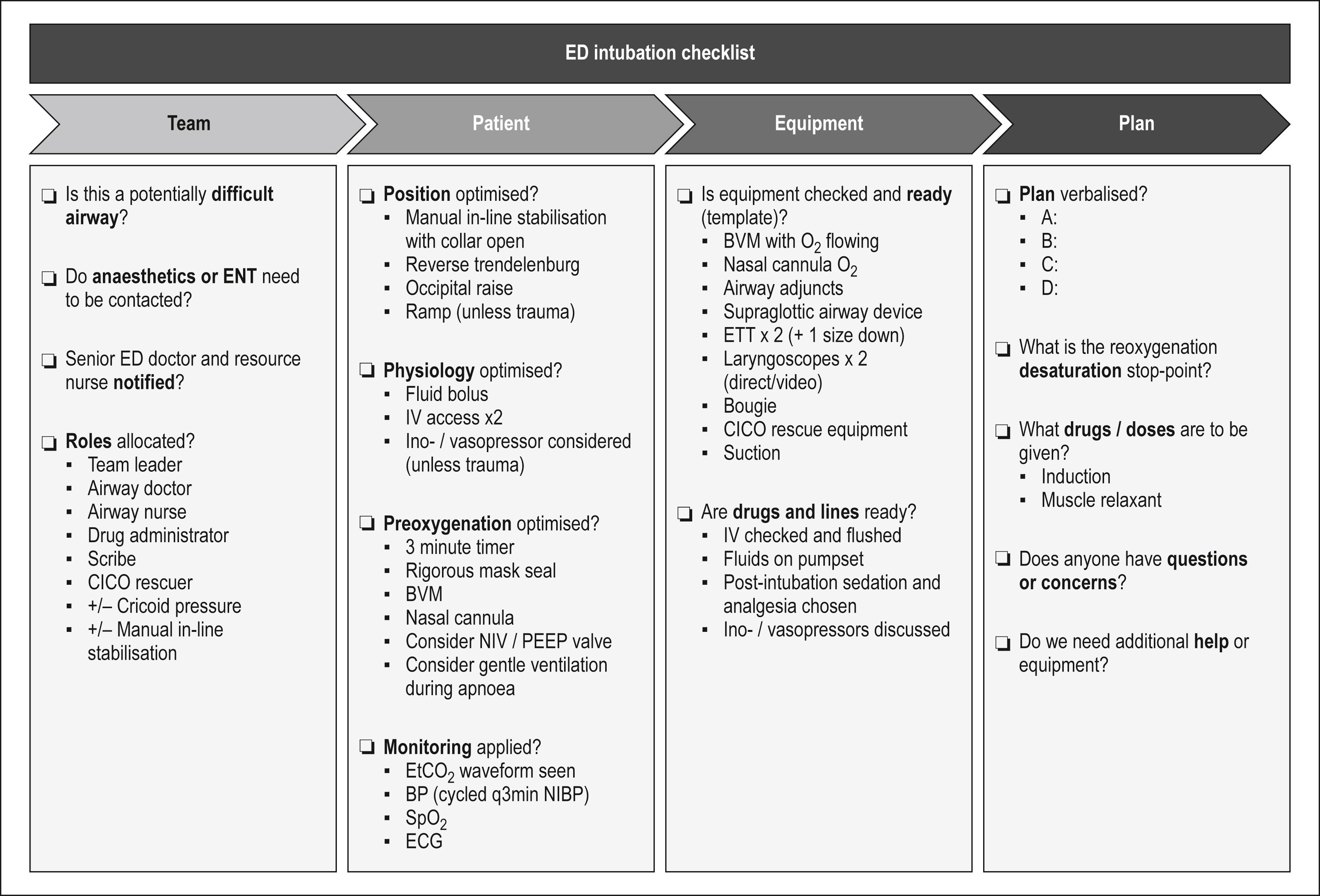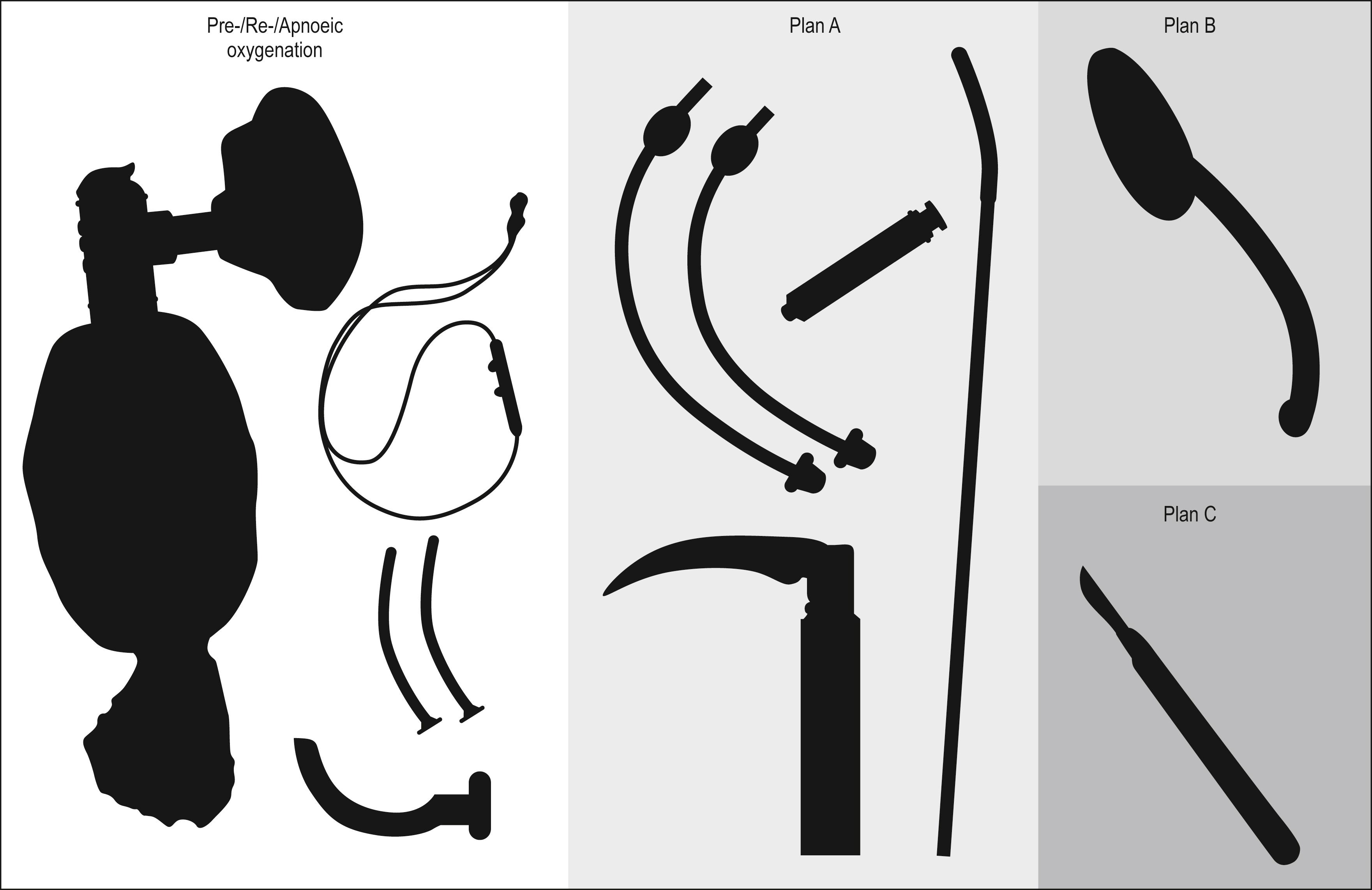Physical Address
304 North Cardinal St.
Dorchester Center, MA 02124
Respiratory failure is a common presentation to the emergency department and ventilatory support may be required.
Non-invasive ventilation is appropriate for many patients with respiratory failure; endotracheal intubation and mechanical ventilation is used for cases where non-invasive ventilation is unsuccessful or contraindicated.
Rapid sequence intubation, using a sedative plus muscle relaxant drugs to facilitate endotracheal tube placement, is the default technique in the emergency department.
If visualization of the vocal cords at laryngoscopy is difficult, a ‘plan B’, previously agreed to, should be initiated to avoid patient hypoxaemia.
Clinical checks to confirm correct endotracheal tube position are unreliable. Waveform capnography must be used to confirm tracheal placement.
In patients with acute lung injury and decreased pulmonary compliance, a protective lung ventilation strategy using low tidal volumes should be used to avoid barotrauma.
Assessment and management of the airway is a core skill in emergency medicine. Contemporary practice focuses on optimal preparation to mitigate the risks inherent in airway management, particularly rapid sequence intubation (RSI).
Evaluation of the airway commences with a ‘ look, listen, feel ’ approach to detect partial or complete airway obstruction. If airway compromise is suspected, initial basic airway manoeuvres include the jaw thrust, chin lift and head tilt, and placement of an oropharyngeal airway (OPA) (see Chapter 1.1, ‘Basic Life Support’).
Gentle direct inspection of the upper airway using a laryngoscope may be necessary to detect a foreign body, which can be removed using a Yankauer suction catheter for liquids/secretions and/or Magill’s forceps for solid material. Once the airway is cleared, supplemental oxygen by face mask is commenced as consideration is given to the breathing status.
Evaluation of breathing also uses a ‘ look, listen, feel ’ approach. A pulse oximeter gives initial information about the adequacy of oxygenation and the breathing may be further assessed with an arterial or venous blood gas analysis to measure the PCO 2 .
Conscious patients with a patent airway but who have hypoxia and/or hypercapnia should then be considered for non-invasive ventilation (NIV) or endotracheal intubation (ETI) and mechanical ventilation.
Patients in respiratory failure with hypoxaemia and/or hypercapnia may benefit from a trial of NIV. The use of NIV involves administration of a controlled mixture of oxygen and air delivered at a set positive pressure via a tightly sealed face mask. The pressure is generally maintained between 5 and 10 cm H 2 O during both inspiration and expiration. This continuous positive airway pressure (CPAP) recruits lung alveoli that were previously collapsed, improving the ventilation/perfusion (VQ) ratio and thus helping to correct hypoxaemia. There may also be a reduction in the work of breathing as a result of improved pulmonary compliance.
Inspiratory support (i.e. 5 to 20 cm H 2 O above the baseline pressure) during NIV is known as bi-level NIV or BiPAP. This additional inspiratory support is thought to further reduce the work of breathing when there is poor lung compliance or increased airway resistance.
Contraindications to NIV include comatose or combative patients, poor tolerance of a tight-fitting face mask, poor seal of the face mask due to facial hair, and/or the lack of trained medical or nursing staff to institute and monitor the NIV.
Actual or impending airway compromise (threat to airway patency or protection): Attempts to improve airway patency should occur automatically and include positioning manoeuvres such as a jaw thrust, suctioning of the oropharynx and the use of airway adjuncts including oropharyngeal and nasopharyngeal airways. Unconscious patients may maintain airway patency but be unable to protect their airway and are at risk of aspiration.
Ventilatory failure: Patients may require ventilatory support for myriad reasons including trauma (e.g. flail chest), weakness (e.g. Guillain-Barre syndrome) or for fatigue (poor lung compliance, e.g. acute respiratory distress syndrome [ARDS]).
Unmanageable or severely agitated patients requiring assessment and management: To facilitate safe assessment and care of the patient and to enable the clinical team to progress resuscitation efforts without risk to their own safety.
Anticipated Clinical Course: Patients who are likely to deteriorate, for example patients with an altered conscious state with a head injury, or with airway burns, should have their airway definitively managed early. This may also be appropriate for patients who will need operative intervention during their resuscitation and are likely to undergo a series of painful procedures prior to the anaesthetic they will receive in theatre.
The decision to intubate a patient should be made collaboratively by the resuscitation team leader and the doctor responsible for airway management. In every case consider whether the benefits of RSI outweigh the potential risks of the procedure.
Careful preparation is essential prior to RSI. A history of current medications, allergies and time of the last meal should be sought and the airway examined looking for anatomical features that may predict difficult intubation.
The administration of a fast-acting muscle relaxant is a critical component of RSI allowing prompt laryngoscopy and passage of a cuffed endotracheal tube (ETT). Apnoea is a necessary part of this process and desaturation will occur without efforts to prevent it. Effective pre-oxygenation may allow several minutes of apnoea without desaturation and should be utilized in the management of any patient who requires intubation. Pre-oxygenation involves the provision of a high concentration of oxygen for a sufficient period to wash out the nitrogen in the lungs. This ‘denitrogenation’ establishes an oxygen reservoir in the lung volume which prolongs the safe apnoea time. Fig. 2.1.1 compares the efficacy of denitrogenation of pre-oxygenation techniques available in the emergency department compared with the anaesthetic circuit.

The continuous provision of oxygen through a patent airway in the form of high flow nasal oxygen is called ‘apnoeic oxygenation’ and will also increase the safe apnoea time. Other factors can reduce the safe apnoea time however, for example children and pregnant women consume oxygen at a faster rate and their safe apnoea times are shorter as a result. The same is true of unwell patients whose metabolic rate is increased due to sepsis or drugs. Fig. 2.1.2 illustrates the different safe apnoea time duration for these patient groups despite effective denitrogenation preoxygenation.

Traditional RSI teaching prohibited face mask ventilation (FMV) during the apnoeic period to reduce the risk of gastric insufflation and aspiration but this must be balanced against the risk of hypoxia. For patients who are already hypoxic, those with profound acidaemia, and paediatric patients, it is safer to provide ongoing ventilation during apnoea using a two-person FMV technique focusing on airway patency and generating the minimum airway pressure to achieve chest rise and fall.
For some patients requiring emergent intubation, pre-oxygenation is difficult or impossible due to agitation and poor tolerance of a face mask. Administration of a muscle relaxant to facilitate control of the patient in the hope that a rapidly passed ETT will allow oxygenation is a risky approach and is often associated with desaturation even in the anatomically normal airway, let alone unexpectedly difficult airways. A safe approach is the judicious use of sedation to facilitate pre-oxygenation prior to RSI. This is sometimes referred to as delayed sequence intubation (DSI) which is essentially procedural sedation for pre-oxygenation. Ketamine (intramuscular (IM) or intravenous (IV)) may be the ideal agent as the patient should continue to maintain airway patency and ventilation whilst sedated.
For trauma patients with spinal precautions the use of the reverse Trendelenburg position will improve VQ matching. Raising the head with a folded towel placed under the occiput brings the cervical spine to a more anatomical position and also improves the position of the airway for laryngoscopy, as well as FMV. Manual in-line stabilization of the spine should be maintained during laryngoscopy by a dedicated team member.
Where cervical spine injury is not a concern positioning the patient in the ear-to-sternal-notch position, with the face parallel to the ceiling, is preferred.
An RSI checklist should be used as a guide to preparation of the team, equipment and patient, prior to the final challenge-response run through of the checklist ( Fig. 2.1.3 ).

In addition, the use of a standardized RSI equipment template, or ‘kit-dump’ may facilitate rapid preparation of the essential equipment ( Fig. 2.1.4 ).

All drugs must be drawn up and checked in advance and the syringes clearly labelled. A spare laryngoscope must be available in case of failure of the first and the appropriate size of ETT opened, lubricated and the cuff checked. Another ETT (one size smaller) should also be available. Finally, a bougie must be immediately available. An ETT introducer (stylet) is preferred by some practitioners to provide a ‘hockey-stick’ or ‘straight to cuff’ shape to the end of the ETT.
The administration of drugs for RSI should not occur until the airway team (laryngoscopist and airway assistant) indicates to the team leader that they are ready to undertake the RSI, having optimized the patient, and completed the airway checklist.
The use of cricoid pressure is controversial. Historically it has been used to prevent aspiration but the evidence base for this is not strong and more recent evidence suggests it may worsen the view at laryngoscopy.
Monitoring required during RSI must include a continuous electrocardiography (ECG) trace and pulse oximetry. The blood pressure should be measured either non-invasively using an automated monitoring device or invasively using an intra-arterial catheter for the haemodynamically unstable patient. Waveform capnography for end-tidal carbon dioxide (ETCO 2 ) measurement following RSI must be calibrated and ready to use.
The ideal sedative agent would rapidly render a patient unconscious and amnesic on administration, whilst also providing effective analgesia, and maintaining cerebral perfusion, without negative haemodynamic compromise or other major adverse side effects. Unfortunately, there is currently no such drug available, and the main agents all have potential advantages and disadvantages associated with their use.
Commonly used sedative drugs (and doses) include:
Ketamine (1–2 mg/kg [IV], 5 mg/kg [IM])
Propofol (0.5–2.5 mg/kg)
Thiopentone (2–5 mg/kg)
Midazolam (0.05–0.3 mg/kg)
Ketamine is a dissociative anaesthetic agent with hypnotic, analgesic and local anaesthetic properties. It is unique in that unlike the other sedative agents listed, it may lead to tachycardia, increased blood pressure and cardiac output. This may be advantageous in the shocked patient. Ketamine’s other beneficial effects include relative preservation of respiratory drive and airway reflexes as well as acting as a bronchial smooth muscle relaxant. These properties combined may make ketamine the ideal choice in a wide range of clinical settings, including:
shocked patients—e.g. haemorrhagic shock
traumatic brain injury
severe asthma
procedural sedation
Ketamine should be used cautiously in patients with known coronary artery disease and poorly controlled hypertension.
Become a Clinical Tree membership for Full access and enjoy Unlimited articles
If you are a member. Log in here